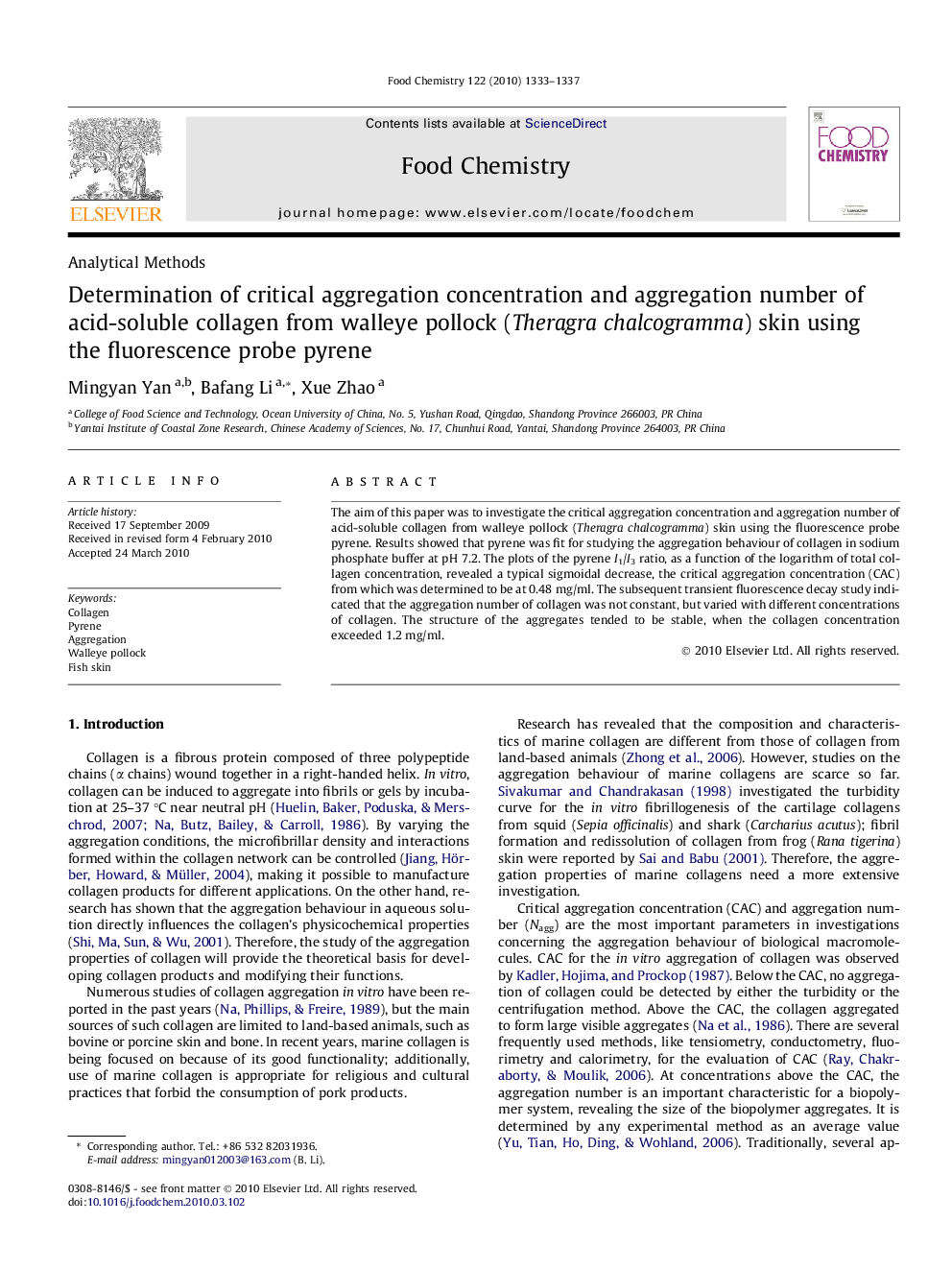| Article ID | Journal | Published Year | Pages | File Type |
|---|---|---|---|---|
| 1185186 | Food Chemistry | 2010 | 5 Pages |
The aim of this paper was to investigate the critical aggregation concentration and aggregation number of acid-soluble collagen from walleye pollock (Theragra chalcogramma) skin using the fluorescence probe pyrene. Results showed that pyrene was fit for studying the aggregation behaviour of collagen in sodium phosphate buffer at pH 7.2. The plots of the pyrene I1/I3 ratio, as a function of the logarithm of total collagen concentration, revealed a typical sigmoidal decrease, the critical aggregation concentration (CAC) from which was determined to be at 0.48 mg/ml. The subsequent transient fluorescence decay study indicated that the aggregation number of collagen was not constant, but varied with different concentrations of collagen. The structure of the aggregates tended to be stable, when the collagen concentration exceeded 1.2 mg/ml.
